Best potato varieties – 12 top crops for your vegetable garden
Branch out and try growing a different variety this year
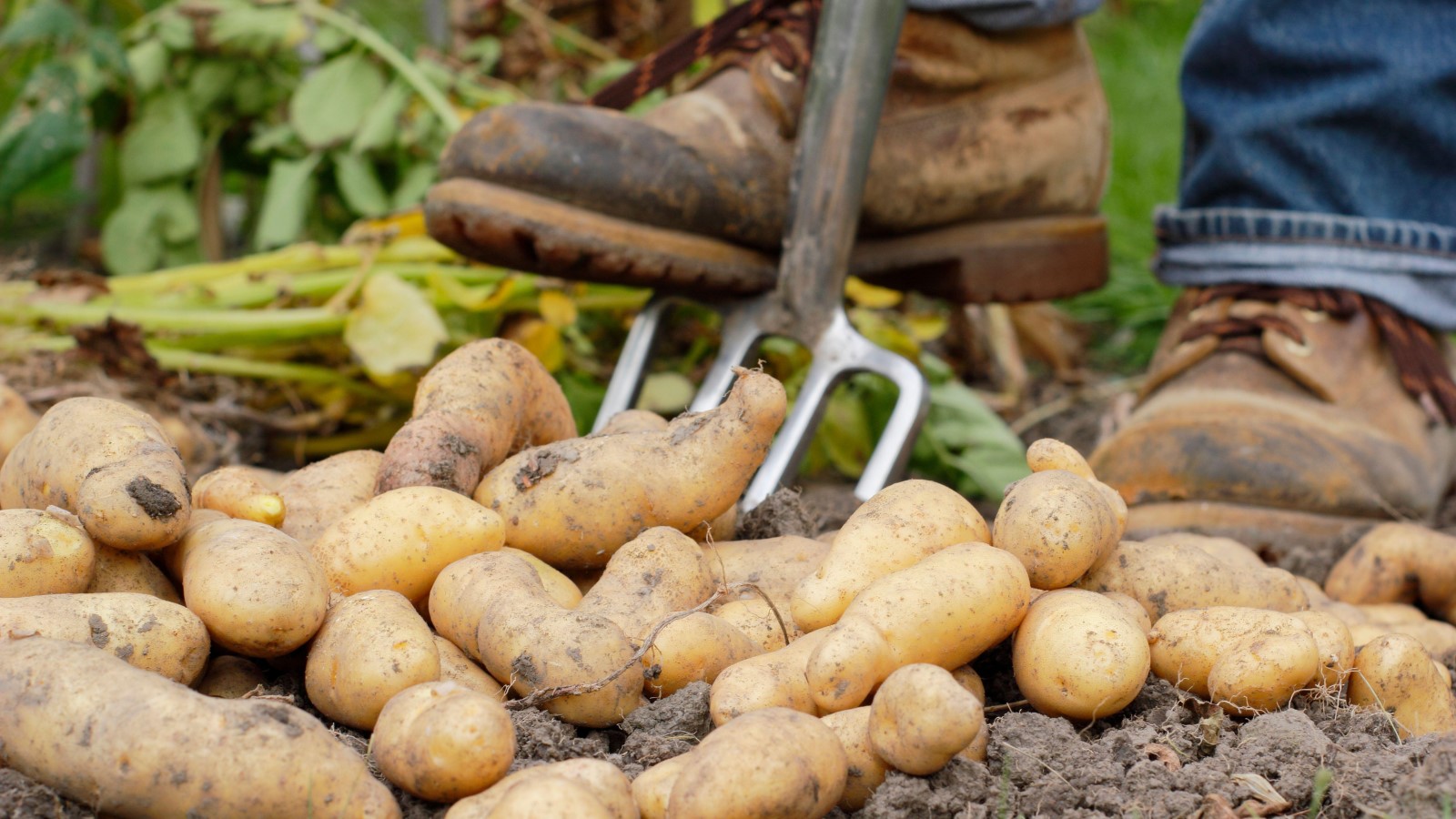

There are so many potato varieties to choose from when growing your own at home. Gardeners are able to take their pick from scores of cultivars, choosing between different colors, flavor profiles and varieties suited for particular culinary uses.
In addition there are potatoes that cope well with certain pests and diseases, such as eelworm, scab and blight, a fungal disease that generally occurs during periods of high humidity later in the summer.
If you are thinking about growing potatoes, or are a seasoned grower just looking for new ideas, there is such a range available that there will be a potato to suit your location and your needs. To make your search for the perfect potato easier, our selection of potato varieties covers different types, colors, and uses.
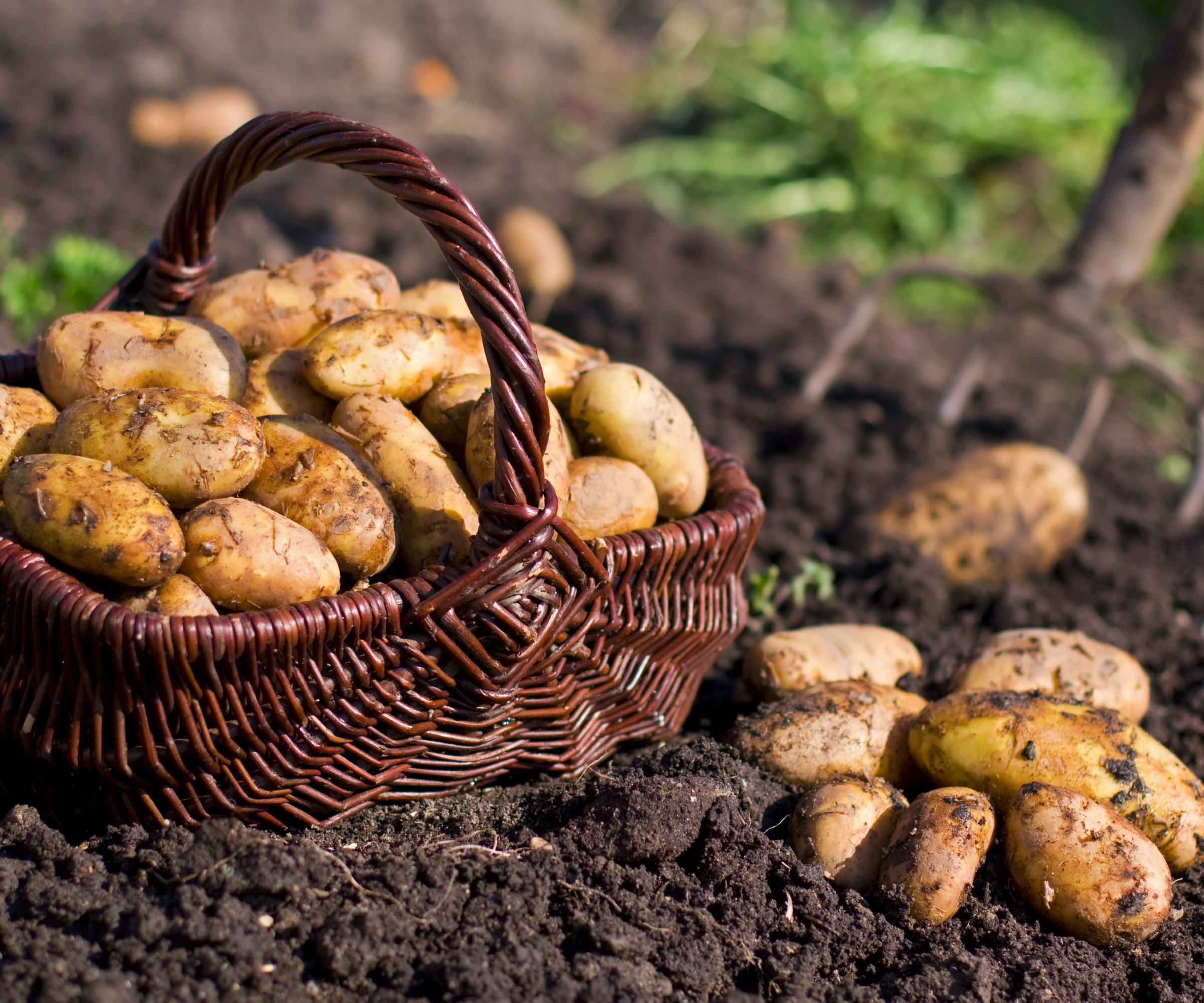
Early season potatoes should be ready to harvest in mid to late summer

Sue Bradley writes about gardening, food and wildlife, and the fascinating people who are passionate about these subjects, for a variety of magazines. She’s a member of the Garden Media Guild and the Guild of Food Writers, and frequently writes about growing a wide range of fruit and vegetables, including potatoes.
12 delicious potatoes varieties to grow this season
There are reportedly over 200 potato varieties commonly sold throughout the US and more than 4,000 different types around the world.
There are different types of potatoes to choose from and they are categorized as early, mid, or late season. The planting times vary according to climate. The potato growing season can be made long by combining types, with early season varieties of potato planted in early spring and late varieties ready to harvest in late summer and into fall.
Early and mid-season types of potatoes can be chitted – placed in a light and airy spot in order to develop shoots – from around late January onwards to give them a head start. Chitting potatoes kick starts the growing process before the ground is warm enough for them to be planted, which leads to an earlier harvest.
Whether you're planning to grow potatoes in bags or in the ground, here is 12 of the best for your vegetable garden.
1. Swift
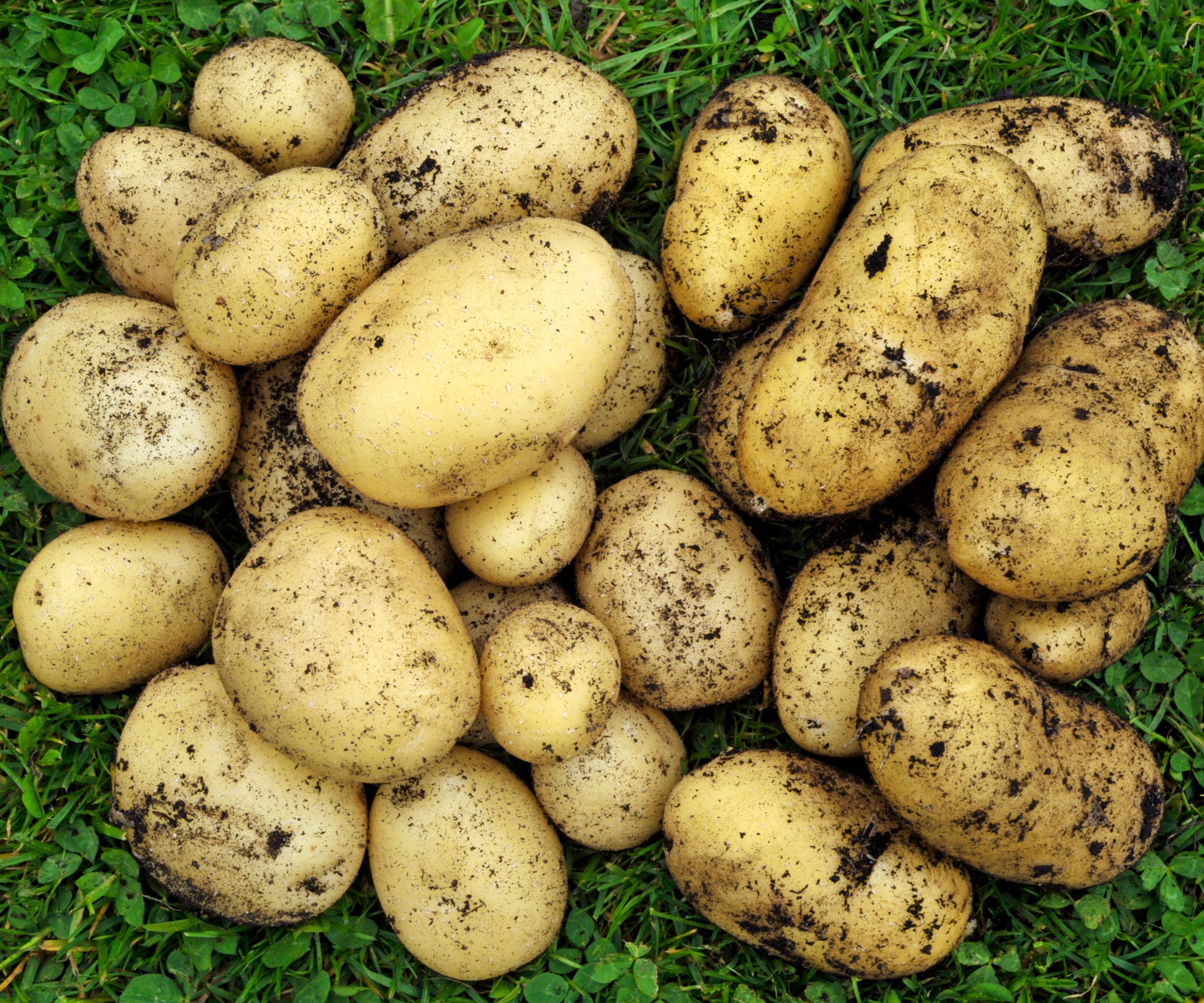
Potato 'Swift'
- Type: Early
- Flesh color: Pale yellow
- Flesh type: Waxy
- Shape: Oval
- Hardiness: USDA 2a to 11b, planting times vary
- Good for: Boiling, salads, fries, and roasting
This is a potato that’s quick to mature. Given the right conditions, this extra-early cultivar produces reasonably-sized tubers within 10 weeks – even quicker under polythene.
They also keep well if left in the ground for a while. This potato has a delicate flavour and has shown good pest and disease resistance. Foliage grows to about 24 inches.
2. Arran Pilot
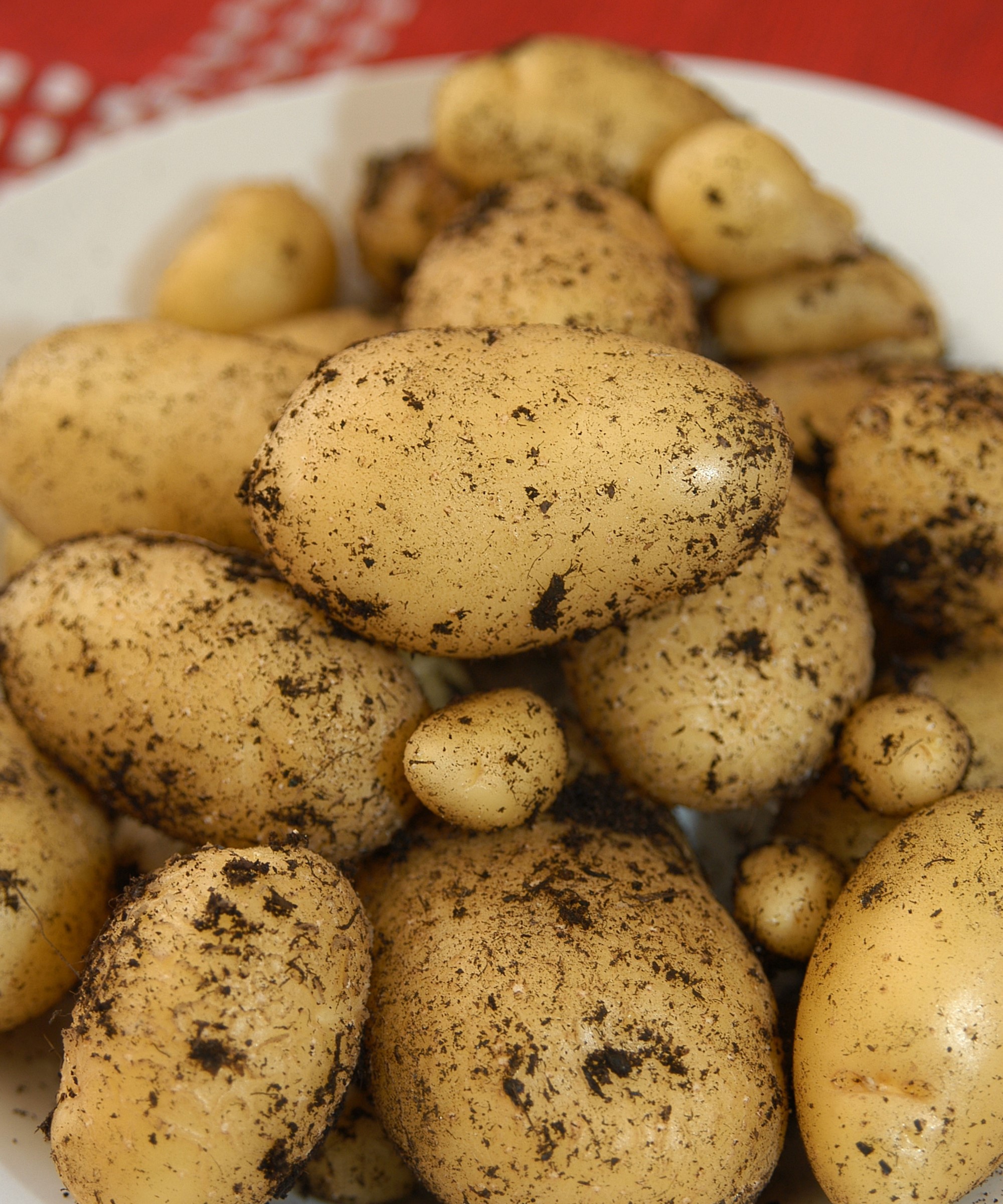
Potato 'Arran Pilot'
- Type: Early
- Flesh color: White
- Flesh type: Firm and creamy
- Shape: Oval
- Hardiness: USDA 2a to 11b, planting times vary
- Good for: Boiling and steaming, and for salads
This tasty potato is best appreciated when freshly dug; indeed it’s recommended that tubers are eaten within 10 days, which is easy given how delicious it is.
This potato has good resistance to slugs and scab and is tolerant of droughts. Crops are usually harvested and eaten before disease becomes an issue. Foliage grows up to 24 inches.
3. Red Duke of York
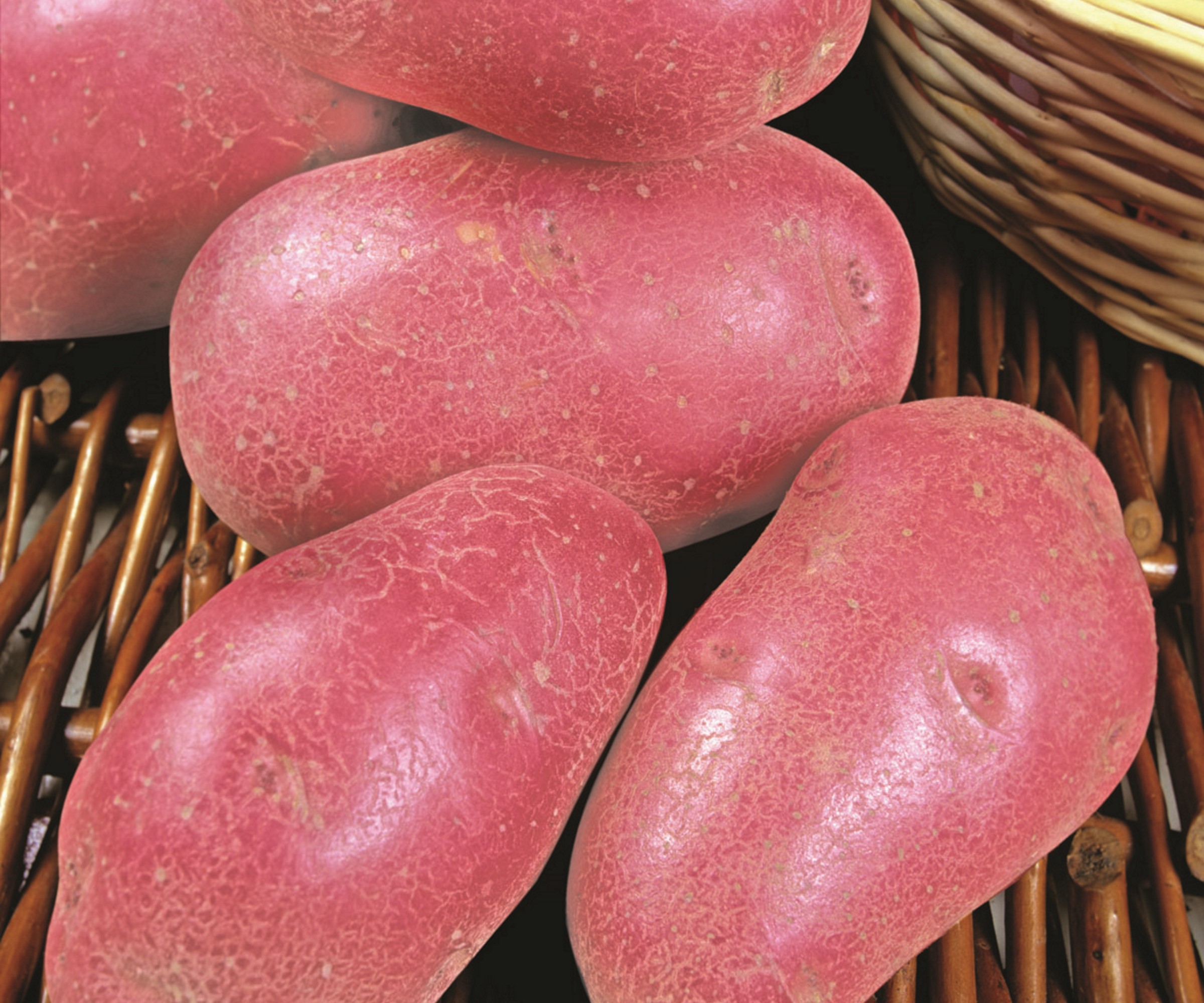
Potato 'Red Duke of York'
- Type: Early
- Flesh color: Creamy yellow
- Flesh type: Moist and floury
- Shape: Oval
- Hardiness: USDA 2a to 11b, planting times vary
- Good for: Roasting, baking, boiling, mashing, fries
A red-skinned potato that’s a good all-rounder with a great flavor. Red Duke of York will grow quite big, making it great for baking. Plants grow up to around to 24 inches. This heritage potato is fairly disease resistant too.
4. Charlotte
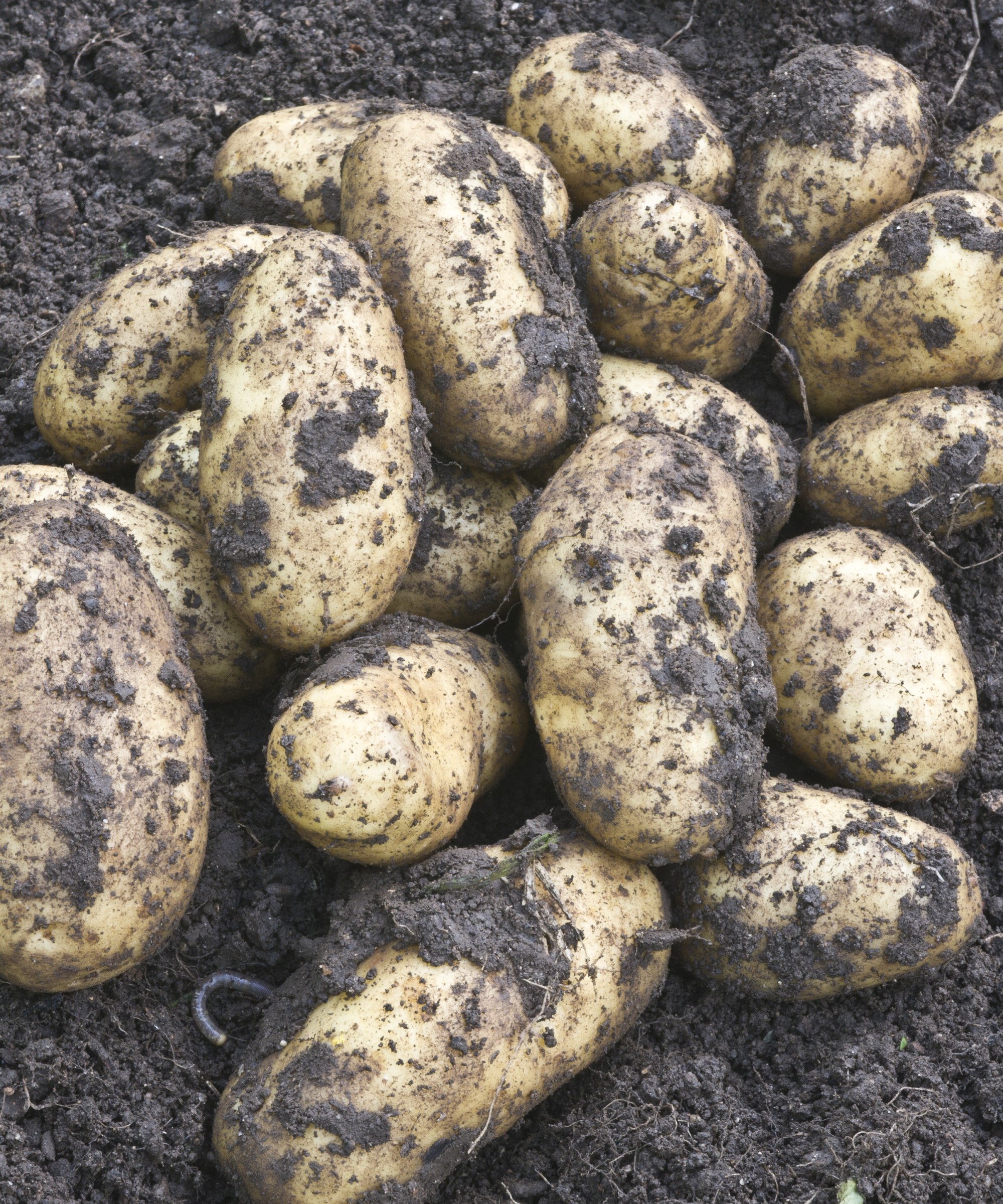
Potato 'Charlotte'
- Type: Early
- Flesh color: Creamy-yellow
- Flesh type: Waxy
- Shape: Pear-shaped
- Hardiness: USDA 2a to 11b, planting times vary
- Good for: Boiling, roasting, sautéing
This flavorsome waxy potato is delicious either hot or cold and is a favorite with many chefs.
Its long, oval, yellow-skinned tubers have shallow eyes and can be harvested while small or left in the ground to grow larger. These are preceded by pretty red-violet flowers. Plants reach a height of up to 39 inches and a spread of 20 inches.
Charlotte has some resistance to the bacterial infection potato blackleg.
5. Kestrel
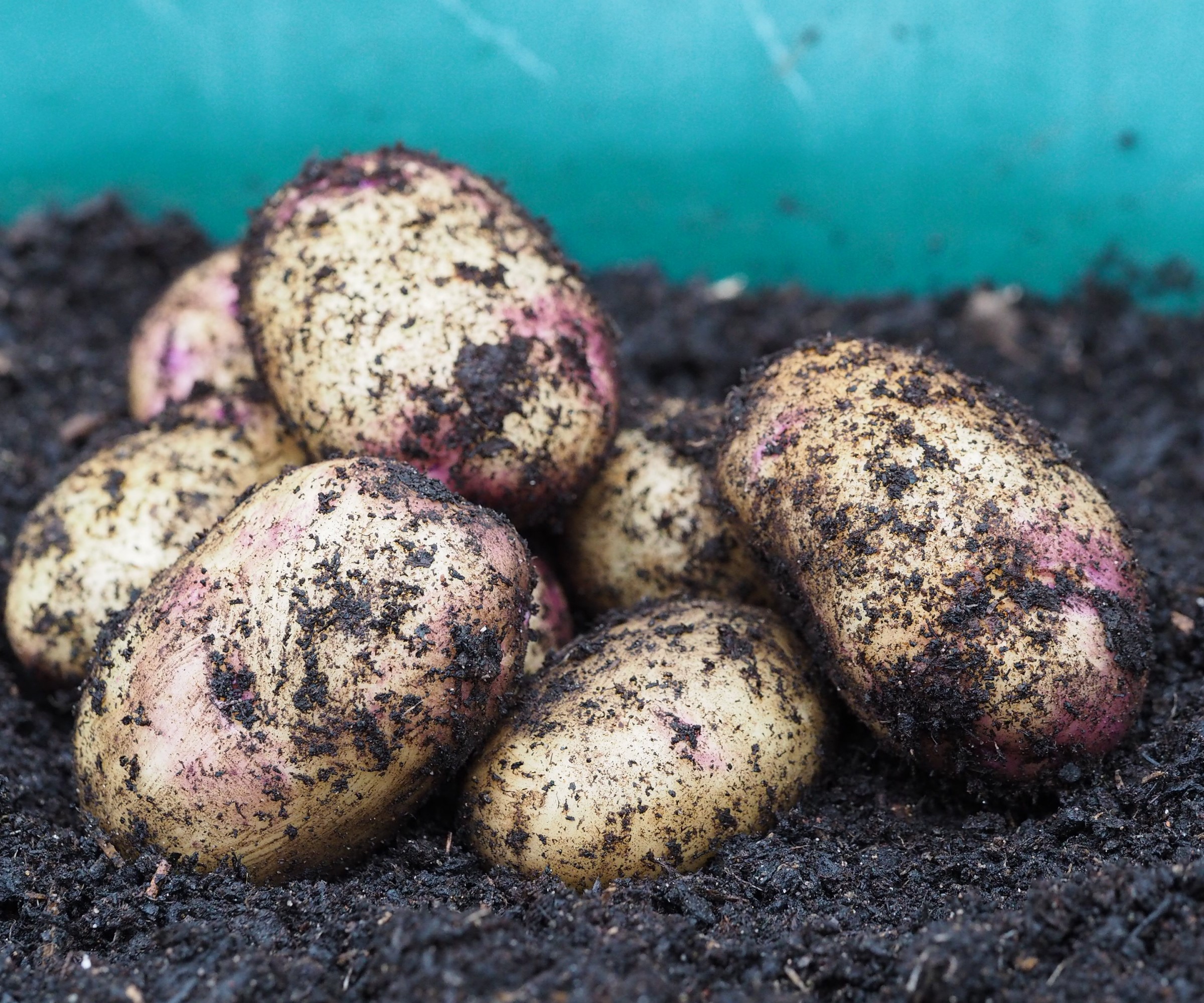
Potato 'Kestrel'
- Type: Mid
- Flesh color: Pale yellow
- Flesh type: Floury
- Shape: Long oval
- Hardiness: USDA 2a to 11b, planting times vary
- Good for: Baking, roasting, fries
This potato stands out with its white skin with purple eyes, along with its resistance to blackleg bacterial infections, mosaic virus, slugs and eelworms. It also copes well with drought.
Kestrel has a classic potato flavor and is said to be great for fries because it doesn’t absorb too much oil. Height and spread of foliage is up to 24 inches.
6. Apache
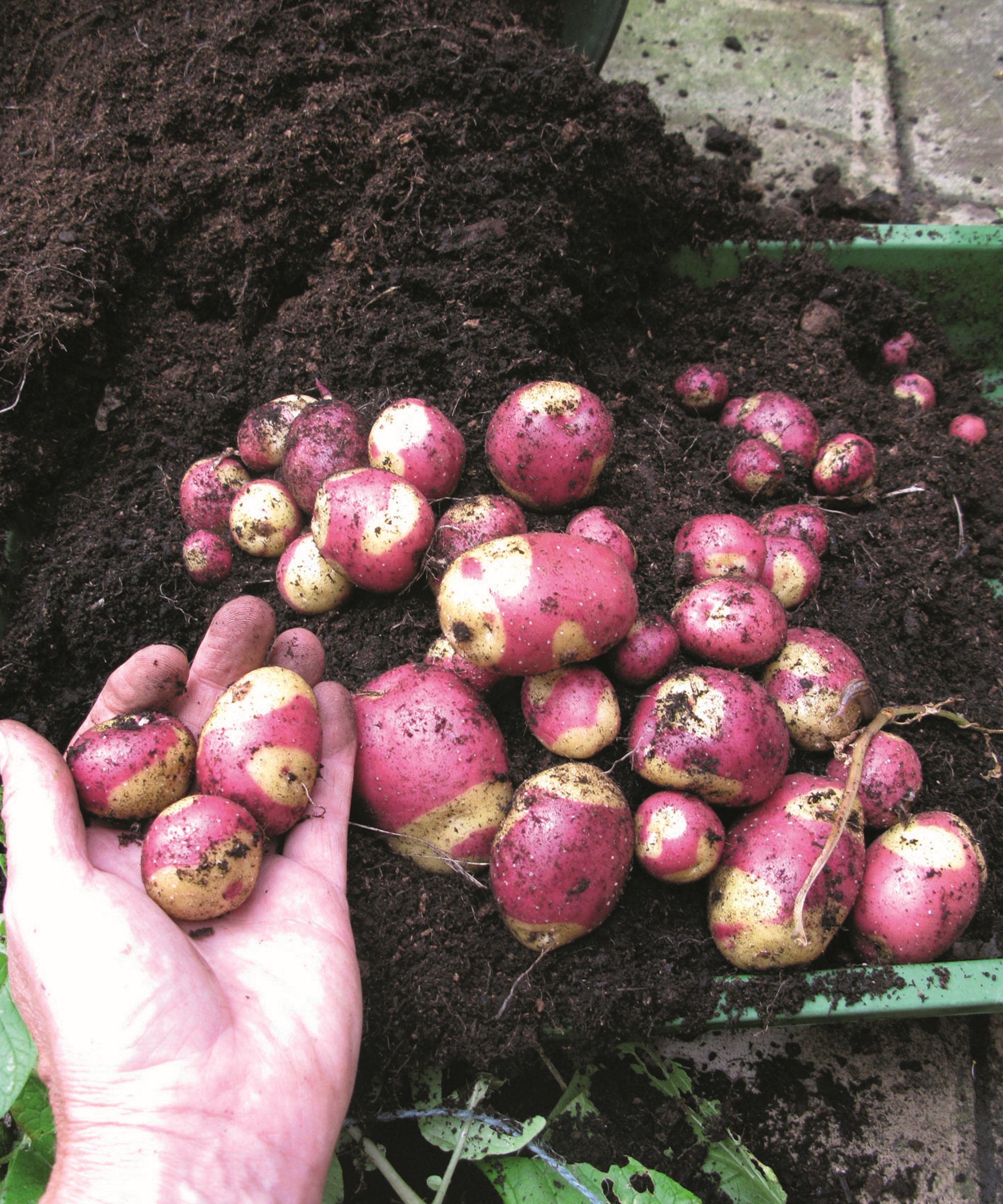
Potato 'Apache'
- Type: Mid
- Flesh color: Yellow
- Flesh type: Waxy
- Potato shape: Round
- Hardiness: USDA 2a to 11b, planting times vary
- Good for: Steaming and roasting
This potato has attractive pink and cream skins and is best eaten when small. It tastes good hot or cold, with some comparing its sweet, buttery flavour to chestnuts. Roast it in its skin for visual appeal.
It's worth knowing that Apache doesn’t store long. Height and spread of foliage is up to 24 inches.
7. Maris Peer
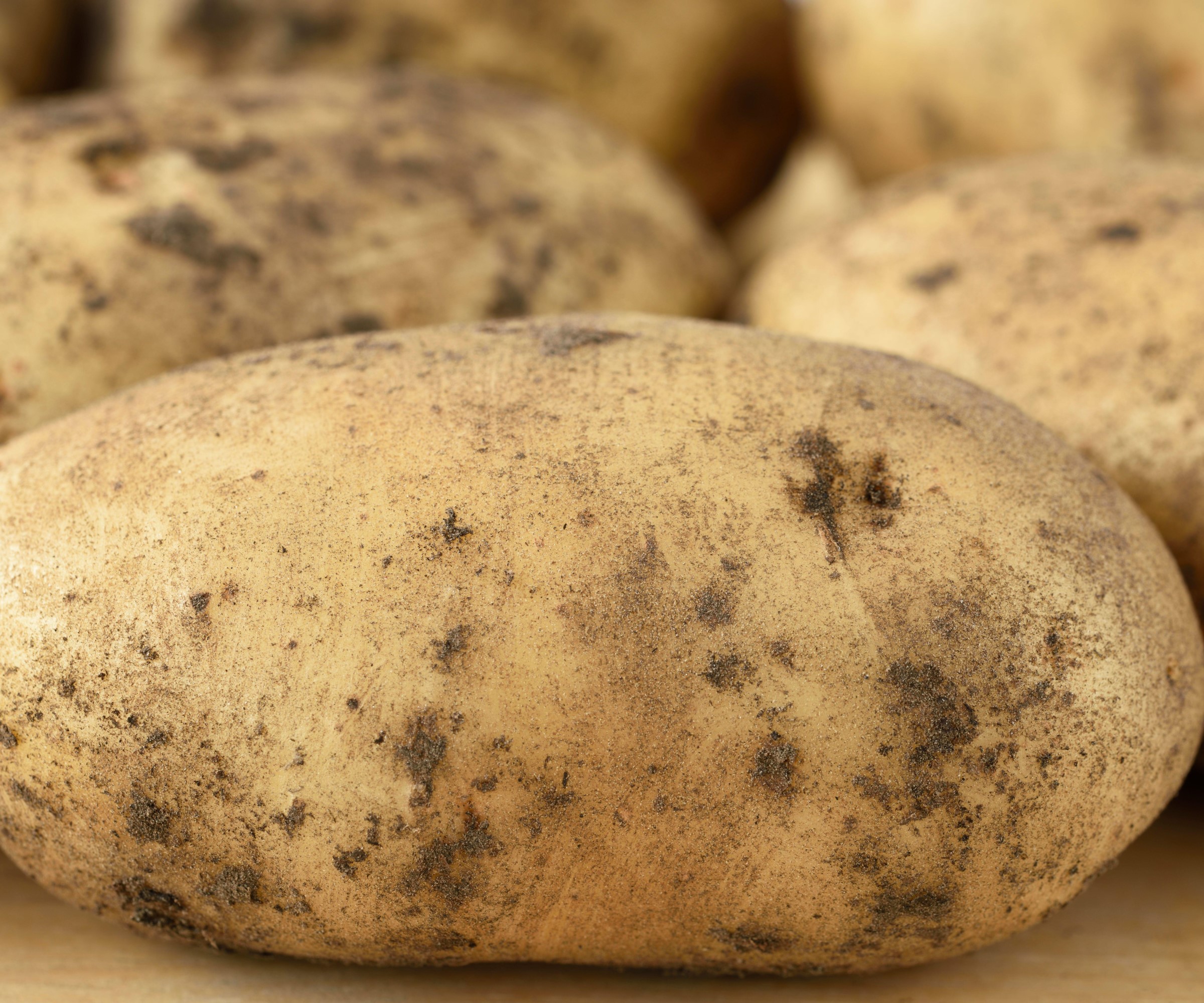
Potato 'Maris Peer'
- Type: Mid
- Flesh color: Creamy yellow
- Flesh type: Waxy
- Shape: Round/oval
- Hardiness: USDA 2a to 11b, planting times vary
- Good for: Roasting, boiling and steaming. Serve hot or cold
Flavorsome, pleasing to the eye and nose with its lightly perfumed purple flowers and reliable, Maris Peer is an old favorite that’s stood the test of time.
This heavy yielder is resistant to blight and scab. It doesn’t disintegrate when cooked.
8. Nicola
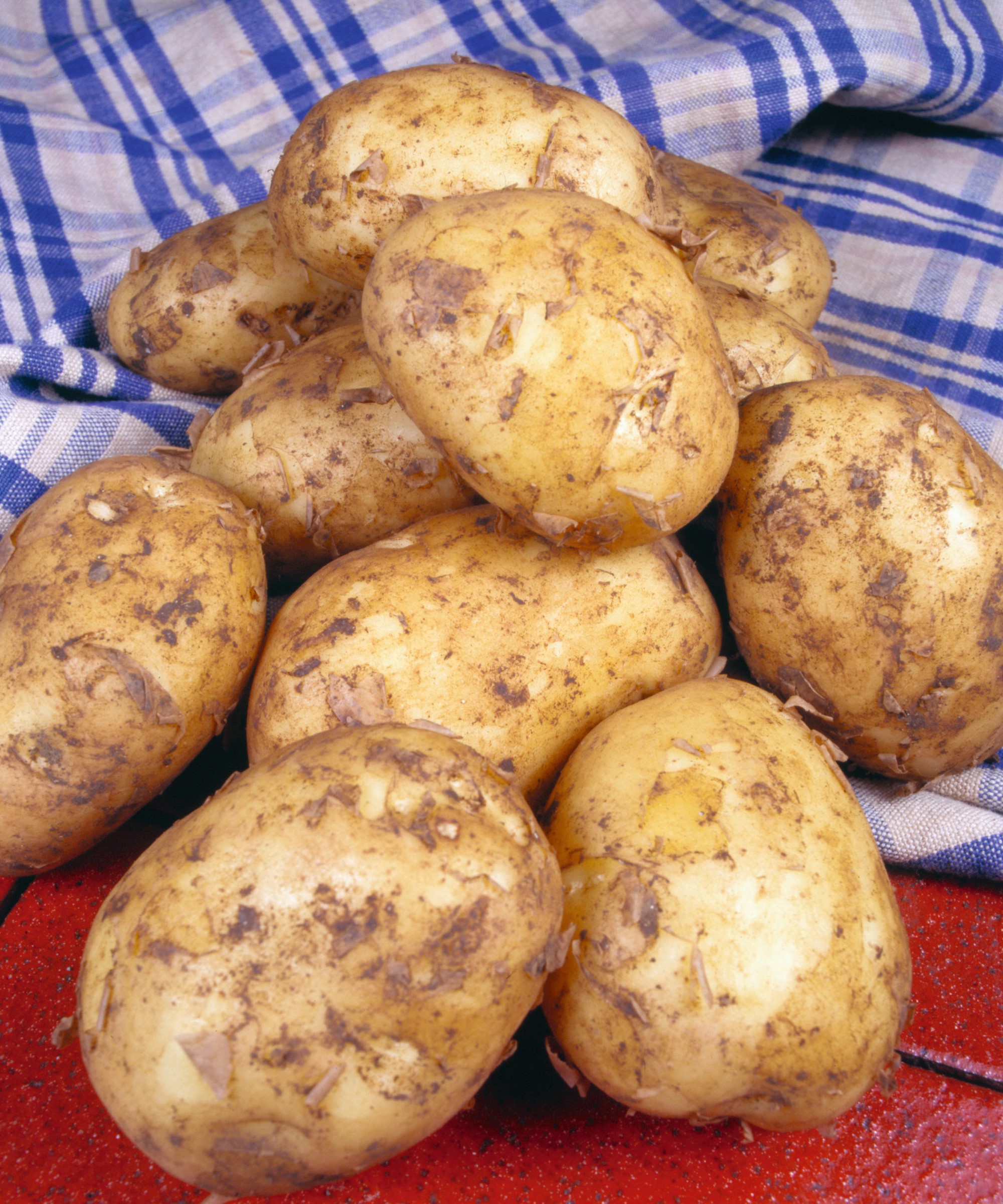
Potato 'Nicola'
- Type: Mid
- Flesh color: Creamy
- Flesh type: Waxy
- Shape: Oval
- Hardiness: USDA 2a to 11b, planting times vary
- Good for: Boiling, steaming and sautéing
A great-tasting salad potato that’s good served hot or cold, with or without its thin skin. It’s a heavy cropper with good resistance to potato eelworm and common and powdery scab, but susceptible to blight.
Nicola can be kept in the ground for a month or longer once it’s ready to be harvested and is a potato that stores well. Popular for planting in summer for Christmas harvests.
9. Ratte
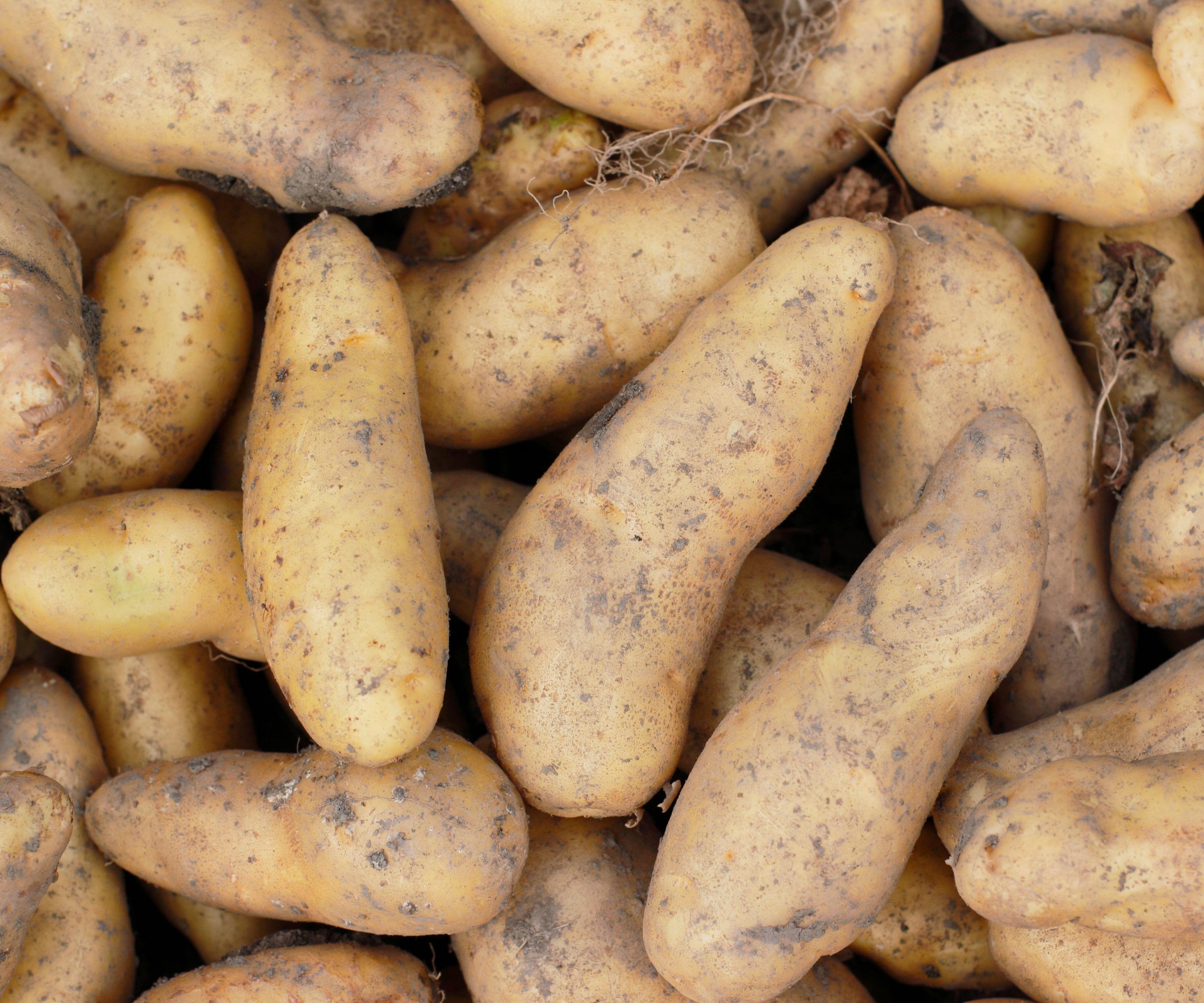
Potato 'Ratte'
- Type: Mid-to-late
- Flesh color: Yellow
- Flesh type: Waxy
- Shape: Long
- Hardiness: USDA 2a to 11b, planting times vary
- Good for: Salads, boiling and steaming
This smaller French potato has a scrumptious chestnut-like flavour. They’re best cooked by steaming in their skins and eaten hot or cold.
Classified as a mid-to-late cultivar, it produces moderate yields of small potatoes with clean skins. Plants grow up to a 3ft in height and width.
10. Arran Victory
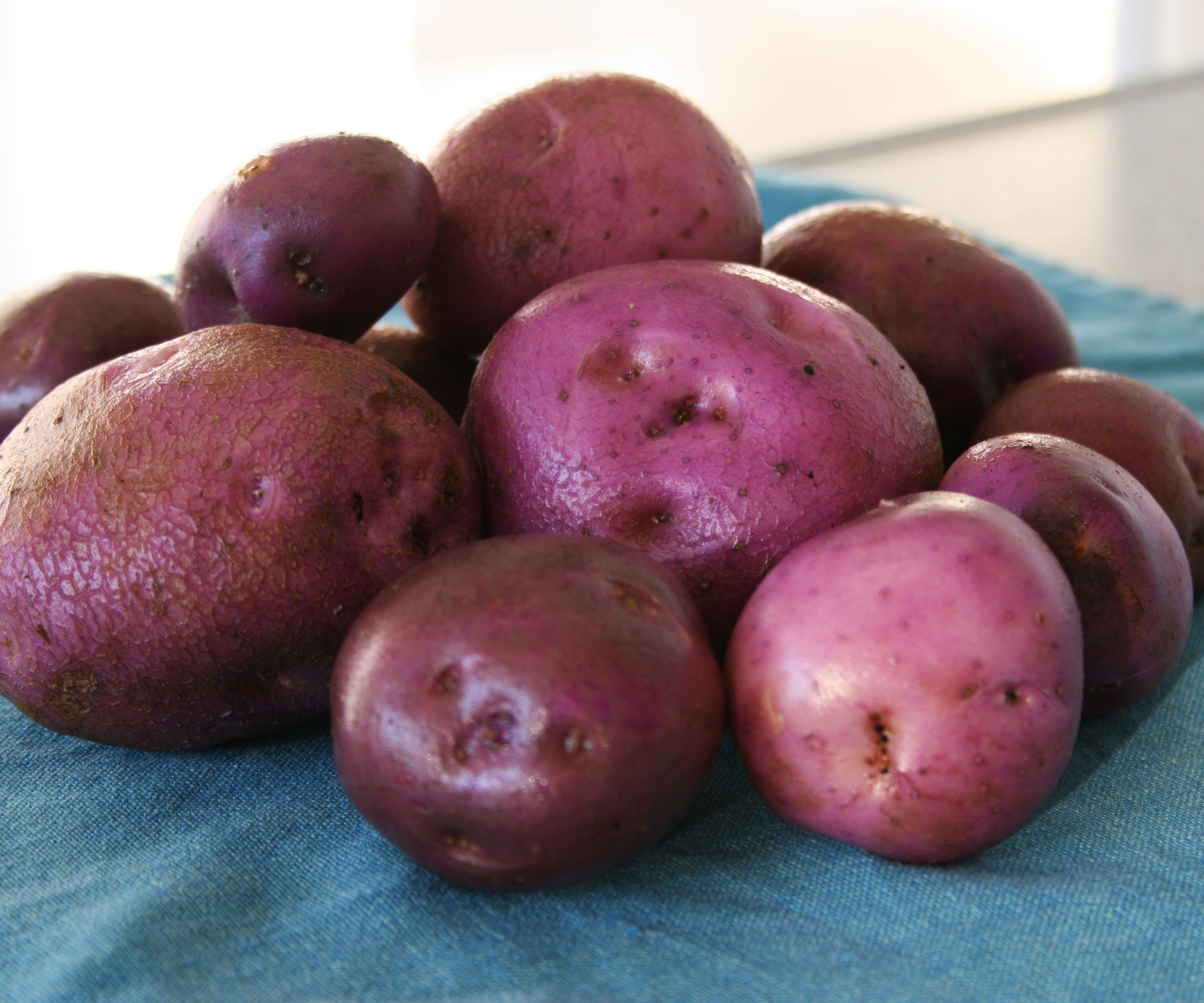
Potato 'Arran Victory'
- Type: Mid-to-late
- Flesh color: White
- Flesh type: Floury
- Shape: Round to oval
- Hardiness: USDA 2a to 11b, planting times vary
- Good for: Mash, baking, roasting and fries
Said to be the best roasting potato available, Arran Victory is also noted for its bright purple skin. This late-maturing cultivar was bred on the Isle of Arran in Scotland in 1918 and released to mark the ending of World War I.
It has a delicious, earthy flavour and produces high yields. It can be harvested as an early, which is good news for those in areas prone to attacks of blight. Plants grow relatively tall.
11. Sarpo Axona
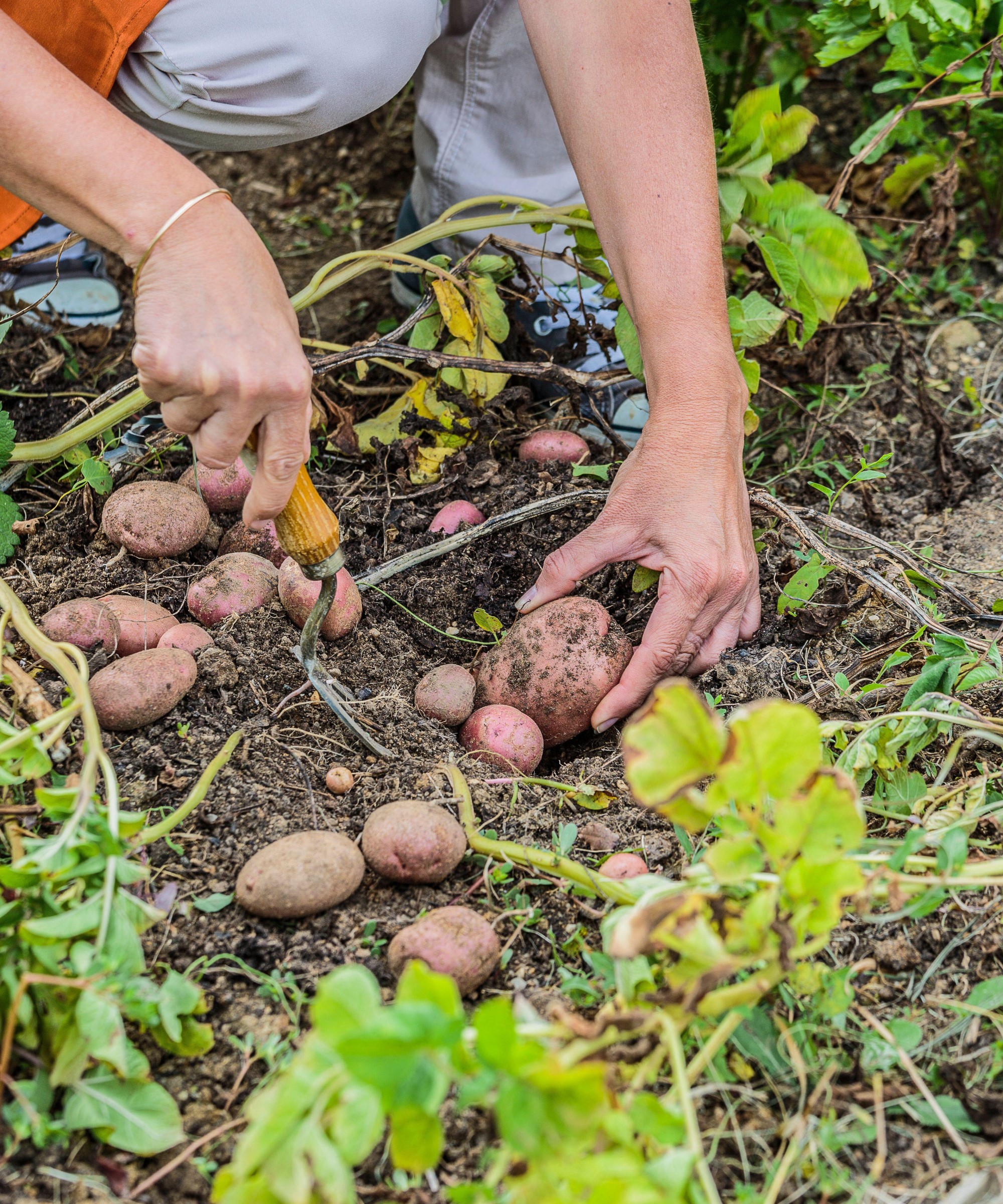
Potato 'Sarpo Axona'
- Type: Late
- Flesh color: Creamy white
- Flesh type: Floury
- Shape: Regular
- Hardiness: USDA 2a to 11b, planting times vary
- Good for: Jackets, roasting, chipping, mashing
A tasty red-skinned late maincrop potato bred in Hungary to resist blight. It also stands up well to viruses and slugs and copes well with drought conditions.
Sarpo Axona produces heavy yields that can be left in the ground longer than other cultivars and store well. Its vigorous tall and dense foliage is good for smothering weeds.
12. Belle de Fontenay

Potato 'Belle de Fontenay'
- Type: Late
- Flesh color: Pale yellow
- Flesh type: Waxy
- Shape: Flattened and elongated pear shape
- Hardiness: USDA 2a to 11b, planting times vary
- Good for: Salads and boiling, larger ones good for baking
This potato from the suburbs of Paris in France has a buttery taste that is said to improve further with storing.
Smaller tubers are great for salads but larger ones make good bakers. It’s also sold under the names Hénault and Boulangére. This potato can be sensitive to disease.
Sign up to the Homes & Gardens newsletter
Design expertise in your inbox – from inspiring decorating ideas and beautiful celebrity homes to practical gardening advice and shopping round-ups.

Sue Bradley writes about gardening, food and wildlife, and the fascinating people who are passionate about these subjects, for a variety of magazines. She served a newspaper apprenticeship and worked on local and regional titles in the West Country before becoming a freelance features writer. She’s a member of the Garden Media Guild and the Guild of Food Writers.
-
 It’s a concept straight out of a fashionista's playbook, but I used the Sandwich Method to organize my kitchen shelves – it’s never looked sleeker
It’s a concept straight out of a fashionista's playbook, but I used the Sandwich Method to organize my kitchen shelves – it’s never looked sleekerIt transformed messy to mesmerizing in a matter of seconds
By Punteha van Terheyden Published
-
 The moody kitchen in this Victorian home has the most unique wall design I've ever seen – it's the perfect way to bring an elegant, aged feel to the space
The moody kitchen in this Victorian home has the most unique wall design I've ever seen – it's the perfect way to bring an elegant, aged feel to the spaceThe hand-painted feature has brought a sense of history and patina back into the remodeled kitchen
By Molly Malsom Published